6 Specifications
6.1 Absolute Maximum Ratings
over operating free-air temperature range (unless otherwise noted)(1)
|
MIN |
MAX |
UNIT |
|
Supply voltage(2) |
VCC1 , VCC2 |
–0.5 |
6 |
V |
|
Voltage (2) |
IN, OUT |
–0.5 |
VCC+0.5(3) |
V |
| IO |
Output current |
|
±15 |
mA |
| TJ |
Junction temperature |
|
150 |
°C |
| Tstg |
Storage temperature |
–65 |
150 |
°C |
(1) Stresses beyond those listed under absolute maximum ratings may cause permanent damage to the device. These are stress ratings only and functional operation of the device at these or any other conditions beyond those indicated under recommended operating conditions is not implied. Exposure to absolute-maximum-rated conditions for extended periods may affect device reliability.
(2) All voltage values are with respect to network ground terminal and are peak voltage values.
(3) Maximum voltage must not exceed 6 V.
6.2 ESD Ratings
|
VALUE |
UNIT |
| V(ESD) |
Electrostatic discharge |
Human-body model (HBM), per AEC Q100-002(1) |
±4000 |
V |
| Charged-device model (CDM), per AEC Q100-011 |
±1500 |
(1) AEC Q100-002 indicates that HBM stressing shall be in accordance with the ANSI/ESDA/JEDEC JS-001 specification.
6.3 Recommended Operating Conditions
|
MIN |
NOM |
MAX |
UNIT |
| VCC1, VCC2 |
Supply voltage |
3 |
|
5.5 |
V |
| IOH |
High-level output current |
–4 |
|
|
mA |
| IOL |
Low-level output current |
|
|
4 |
mA |
| VIH |
High-level input voltage |
2 |
|
5.5 |
V |
| VIL |
Low-level input voltage |
0 |
|
0.8 |
V |
| tui |
Input pulse duration |
40 |
|
|
ns |
| 1 / tui |
Signaling rate |
0 |
|
25 |
Mbps |
| TJ |
Junction temperature(1) |
|
|
136 |
°C |
| TA |
Ambient temperature |
–40 |
25 |
125 |
°C |
(1) To maintain the recommended operating conditions for T
J, see the
Thermal Information table.
6.4 Thermal Information
| THERMAL METRIC(1) |
ISO7310-Q1 |
UNIT |
| D (SOIC) |
| 8 PINS |
| RθJA |
Junction-to-ambient thermal resistance |
119.9 |
°C/W |
| RθJCtop |
Junction-to-case (top) thermal resistance |
65.2 |
°C/W |
| RθJB |
Junction-to-board thermal resistance |
61.3 |
°C/W |
| ψJT |
Junction-to-top characterization parameter |
19.3 |
°C/W |
| ψJB |
Junction-to-board characterization parameter |
60.7 |
°C/W |
| RθJCbot |
Junction-to-case (bottom) thermal resistance |
N/A |
°C/W |
(1) For more information about traditional and new thermal metrics, see the
Semiconductor and IC Package Thermal Metrics application report,
SPRA953.
6.5 Electrical Characteristics—5-V Supply
VCC1 and VCC2 at 5 V ± 10% (over recommended operating conditions unless otherwise noted)
| PARAMETER |
TEST CONDITIONS |
MIN |
TYP |
MAX |
UNIT |
| VOH |
High-level output voltage |
IOH = –4 mA; see Figure 9 |
VCC2 – 0.5 |
4.7 |
|
V |
| IOH = –20 μA; see Figure 9 |
VCC2 – 0.1 |
5 |
|
| VOL |
Low-level output voltage |
IOL = 4 mA; see Figure 9 |
|
0.2 |
0.4 |
V |
| IOL = 20 μA; see Figure 9 |
|
0 |
0.1 |
| VI(HYS) |
Input threshold voltage hysteresis |
|
|
480 |
|
mV |
| IIH |
High-level input current |
IN = VCC |
|
|
10 |
μA |
| IIL |
Low-level input current |
IN = 0 V |
–10 |
|
|
μA |
| CMTI |
Common-mode transient immunity |
VI = VCC or 0 V; see Figure 11. |
25 |
65 |
|
kV/μs |
6.6 Supply Current Characteristics—5-V Supply
All inputs switching with square wave clock signal for dynamic ICC measurement. VCC1 and VCC2 at 5 V ± 10% (over recommended operating conditions unless otherwise noted)
| PARAMETER |
TEST CONDITIONS |
SUPPLY CURRENT |
MIN |
TYP |
MAX |
UNIT |
|
Supply current for VCC1 and VCC2 |
DC to 1 Mbps |
DC Input: VI = VCC or 0 V,
AC Input: CL = 15 pF |
ICC1 |
|
0.3 |
0.6 |
mA |
| ICC2 |
|
1.6 |
2.4 |
| 10 Mbps |
CL = 15 pF |
ICC1 |
|
0.5 |
1 |
| ICC2 |
|
2.2 |
3.2 |
| 25 Mbps |
CL = 15 pF |
ICC1 |
|
0.8 |
1.3 |
| ICC2 |
|
3 |
4.2 |
6.7 Electrical Characteristics—3.3-V Supply
VCC1 and VCC2 at 3.3 V ± 10% (over recommended operating conditions unless otherwise noted)
| PARAMETER |
TEST CONDITIONS |
MIN |
TYP |
MAX |
UNIT |
| VOH |
High-level output voltage |
IOH = –4 mA; see Figure 9 |
VCC2 – 0.5 |
3 |
|
V |
| IOH = –20 μA; see Figure 9 |
VCC2 – 0.1 |
3.3 |
|
| VOL |
Low-level output voltage |
IOL = 4 mA; see Figure 9 |
|
0.2 |
0.4 |
V |
| IOL = 20 μA; see Figure 9 |
|
0 |
0.1 |
| VI(HYS) |
Input threshold voltage hysteresis |
|
|
450 |
|
mV |
| IIH |
High-level input current |
IN = VCC |
|
|
10 |
μA |
| IIL |
Low-level input curre |
IN = 0 V |
–10 |
|
|
μA |
| CMTI |
Common-mode transient immunity |
VI = VCC or 0 V; see Figure 11 |
25 |
50 |
|
kV/μs |
6.8 Supply Current Characteristics—3.3-V Supply
All inputs switching with square wave clock signal for dynamic ICC measurement. VCC1 and VCC2 at 3.3 V ± 10% (over recommended operating conditions unless otherwise noted)
| PARAMETER |
TEST CONDITIONS |
SUPPLY CURRENT |
MIN |
TYP |
MAX |
UNIT |
|
Supply current for VCC1 and VCC2 |
DC to 1 Mbps |
DC Input: VI = VCC or 0 V,
AC Input: CL = 15 pF |
ICC1 |
|
0.2 |
0.4 |
mA |
| ICC2 |
|
1.2 |
1.8 |
| 10 Mbps |
CL = 15 pF |
ICC1 |
|
0.3 |
0.5 |
| ICC2 |
|
1.6 |
2.2 |
| 25 Mbps |
CL = 15 pF |
ICC1 |
|
0.5 |
0.8 |
| ICC2 |
|
2.1 |
3 |
6.9 Power Dissipation Characteristics
VCC1 = VCC2 = 5.5 V, TJ = 150°C, CL = 15 pF, Input a 12.5 MHz 50% duty-cycle square wave (unless otherwise noted)
| PARAMETER |
TEST CONDITIONS |
MIN |
TYP |
MAX |
UNIT |
| PD |
Maximum power dissipation |
|
|
|
34 |
mW |
| PD1 |
Power dissipation by Side-1 |
|
|
|
7.9 |
mW |
| PD2 |
Power dissipation by Side-2 |
|
|
|
26.1 |
mW |
6.10 Switching Characteristics—5-V Supply
VCC1 and VCC2 at 5 V ± 10% (over recommended operating conditions unless otherwise noted)
| PARAMETER |
TEST CONDITIONS |
MIN |
TYP |
MAX |
UNIT |
| tPLH, tPHL |
Propagation delay time |
See Figure 9 |
20 |
32 |
58 |
ns |
| PWD(1) |
Pulse width distortion |tPHL – tPLH| |
See Figure 9 |
|
|
4 |
ns |
| tsk(pp) (2) |
Part-to-part skew time |
|
|
|
24 |
ns |
| tr |
Output signal rise time |
See Figure 9 |
|
2.5 |
|
ns |
| tf |
Output signal fall time |
See Figure 9 |
|
2 |
|
ns |
| tfs |
Fail-safe output delay time from input power loss |
See Figure 10 |
|
7.5 |
|
μs |
(1) Also known as pulse skew.
(2) tsk(pp) is the magnitude of the difference in propagation delay times between any terminals of different devices switching in the same direction while operating at identical supply voltages, temperature, input signals and loads.
6.11 Switching Characteristics
VCC1 and VCC2 at 3.3 V ± 10% (over recommended operating conditions unless otherwise noted)
| PARAMETER |
TEST CONDITIONS |
MIN |
TYP |
MAX |
UNIT |
| tPLH, tPHL |
Propagation delay time |
See Figure 9 |
22 |
36 |
67 |
ns |
| PWD(1) |
Pulse width distortion |tPHL – tPLH| |
See Figure 9 |
|
|
3.5 |
ns |
| tsk(pp) (2) |
Part-to-part skew time |
|
|
|
28 |
ns |
| tr |
Output signal rise time |
See Figure 9 |
|
3.2 |
|
ns |
| tf |
Output signal fall time |
See Figure 9 |
|
2.7 |
|
ns |
| tfs |
Fail-safe output delay time from input power loss |
See Figure 10 |
|
7.4 |
|
μs |
(1) Also known as pulse skew.
(2) tsk(pp) is the magnitude of the difference in propagation delay times between any terminals of different devices switching in the same direction while operating at identical supply voltages, temperature, input signals and loads.
6.12 Typical Characteristics
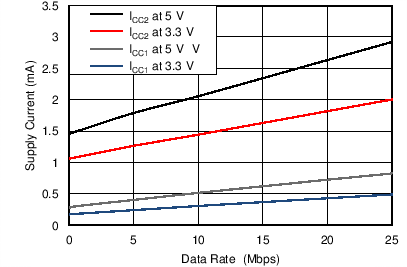 Figure 1. Supply Current vs Data Rate (With 15-pF Load)
Figure 1. Supply Current vs Data Rate (With 15-pF Load)
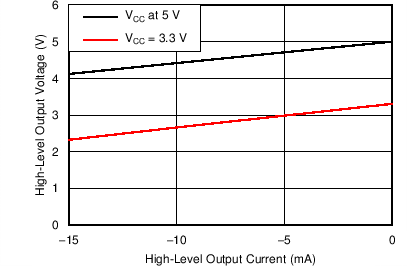 Figure 3. High-Level Output Voltage vs High-level Output Current
Figure 3. High-Level Output Voltage vs High-level Output Current
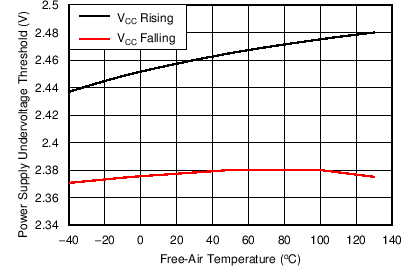 Figure 5. Power Supply Undervoltage Threshold vs Free-Air Temperature
Figure 5. Power Supply Undervoltage Threshold vs Free-Air Temperature
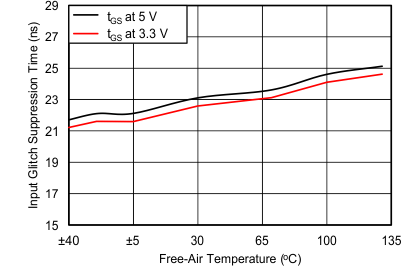 Figure 7. Input Glitch Suppression Time vs Free-Air Temperature
Figure 7. Input Glitch Suppression Time vs Free-Air Temperature
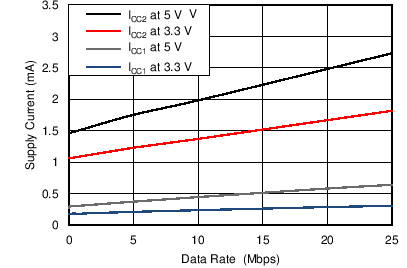 Figure 2. Supply Current vs Data Rate (With No Load)
Figure 2. Supply Current vs Data Rate (With No Load)
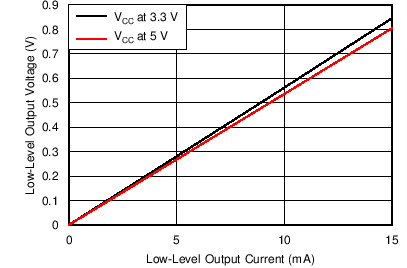 Figure 4. Low-Level Output Voltage vs Low-Level Output Current
Figure 4. Low-Level Output Voltage vs Low-Level Output Current
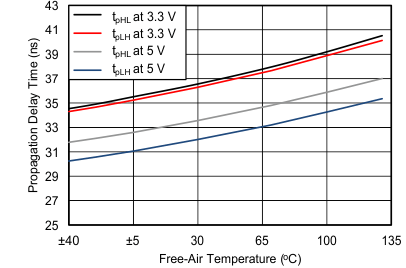 Figure 6. Propagation Delay Time vs Free-Air Temperature
Figure 6. Propagation Delay Time vs Free-Air Temperature
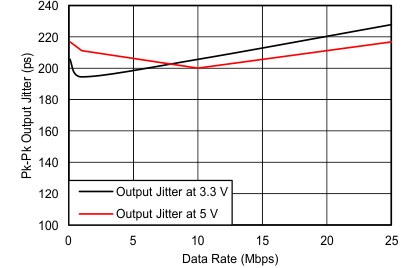 Figure 8. Output Jitter vs Data Rate
Figure 8. Output Jitter vs Data Rate







